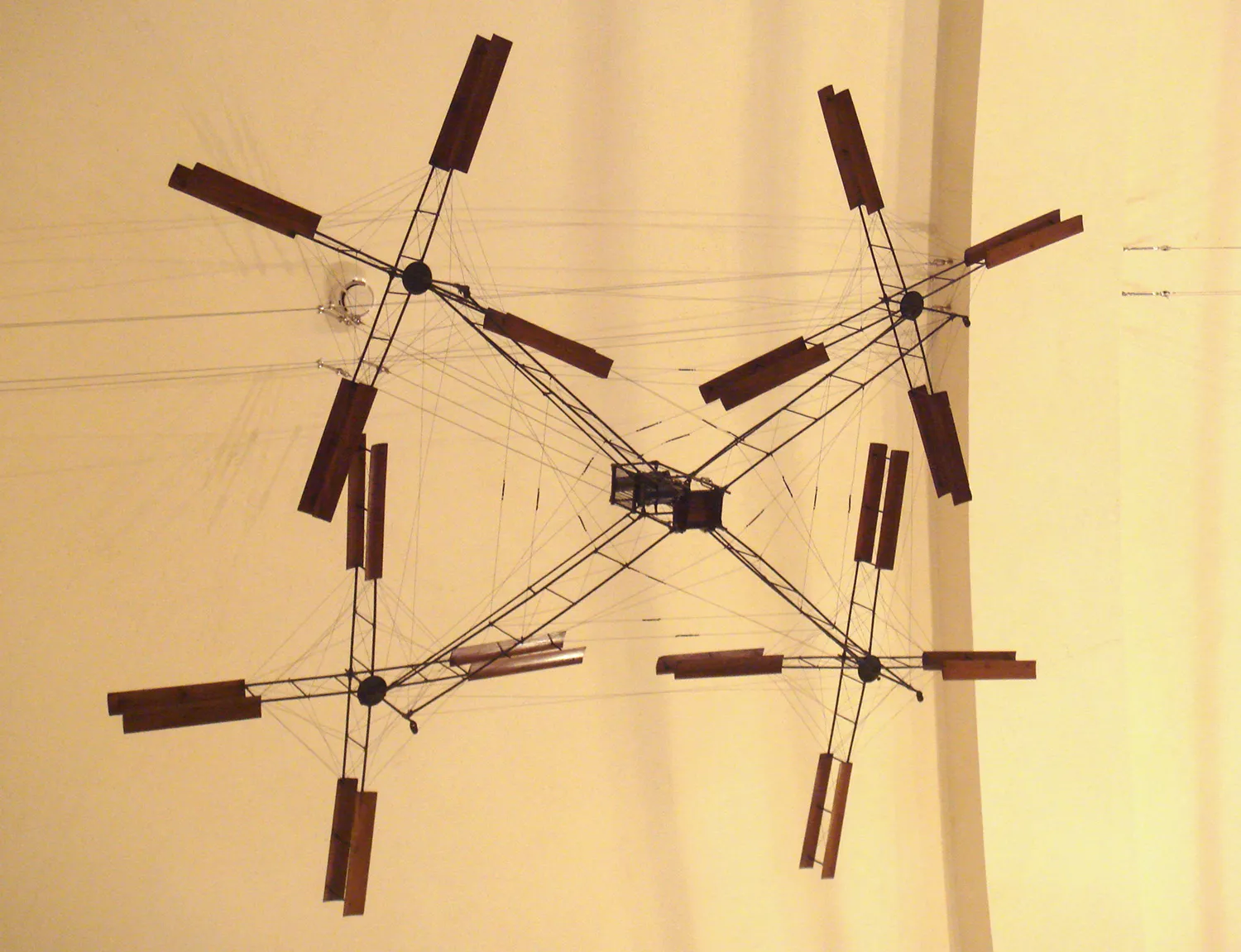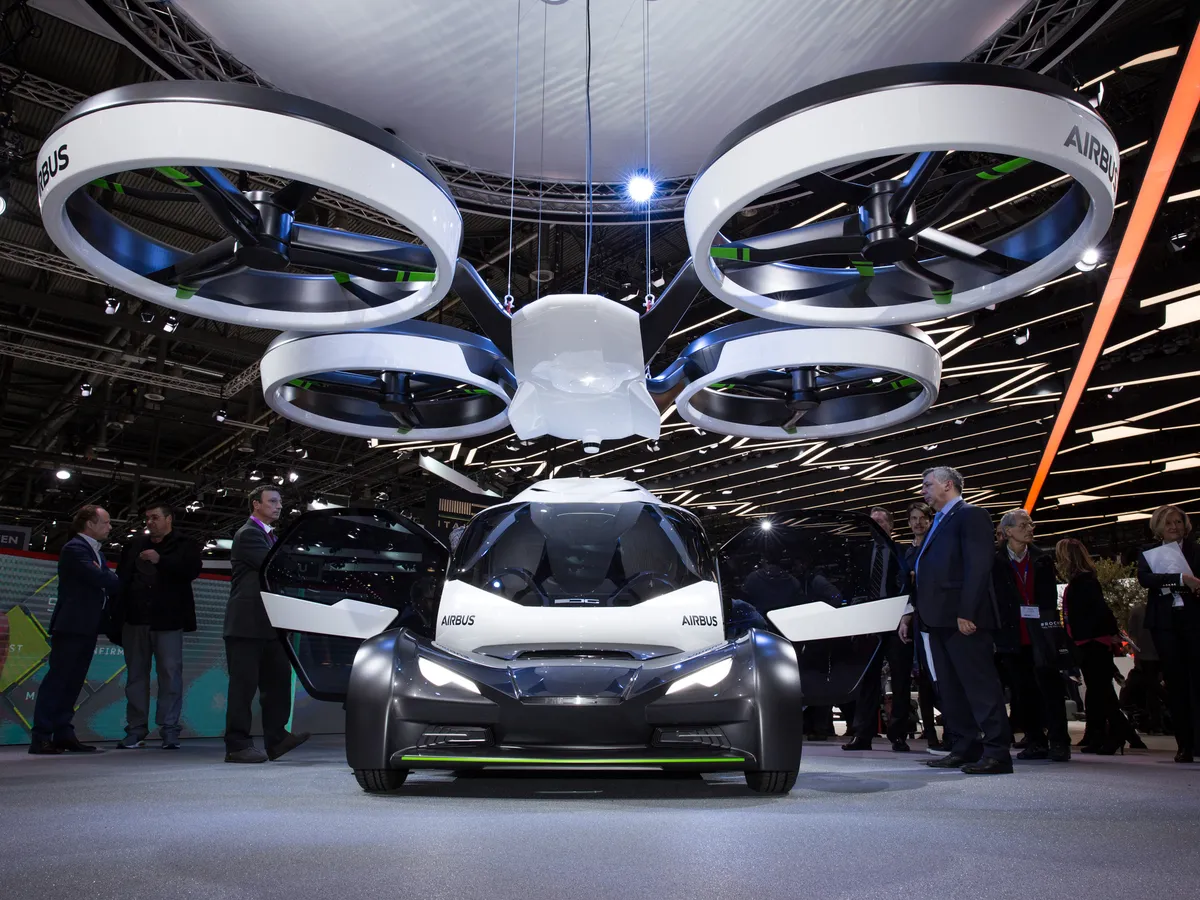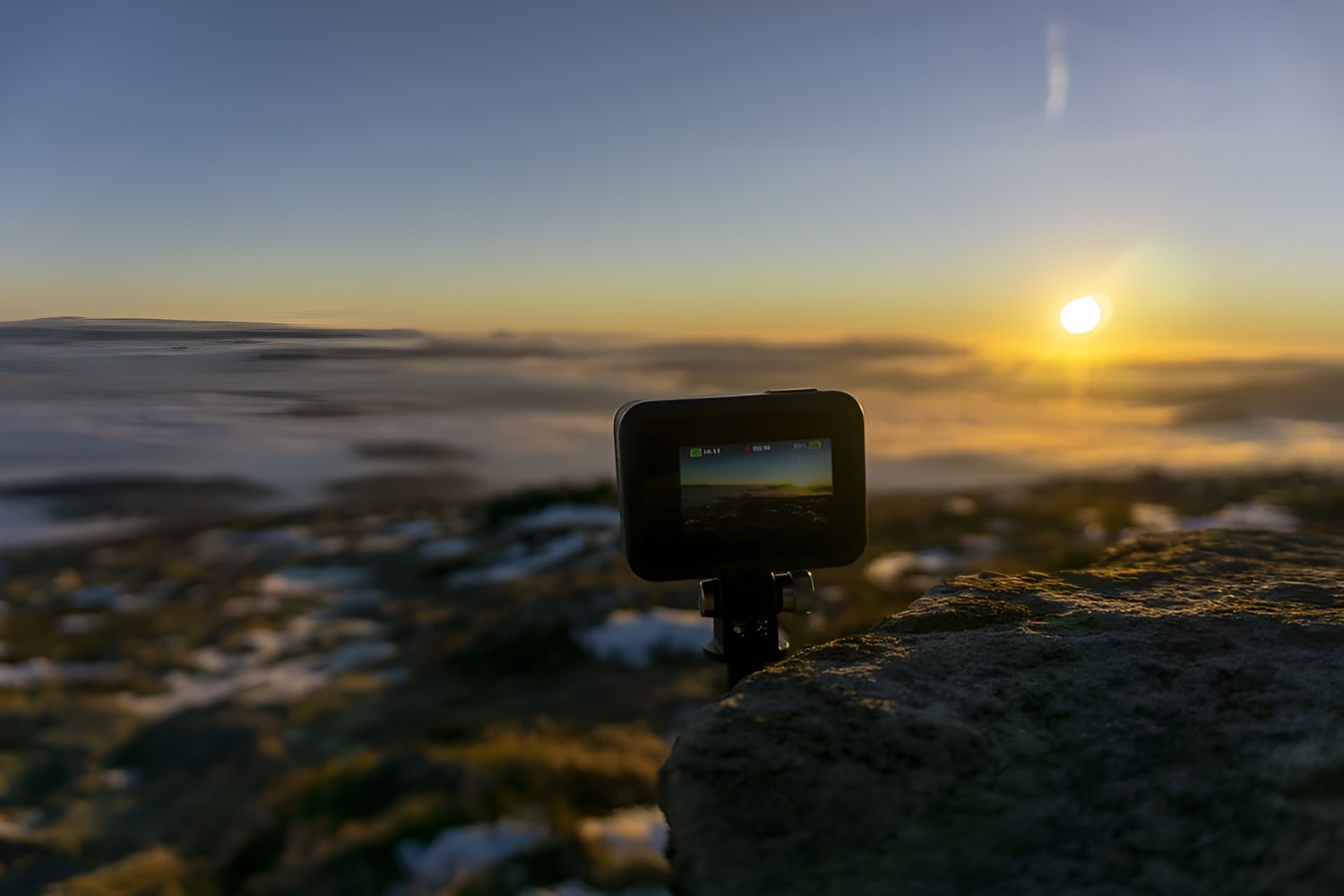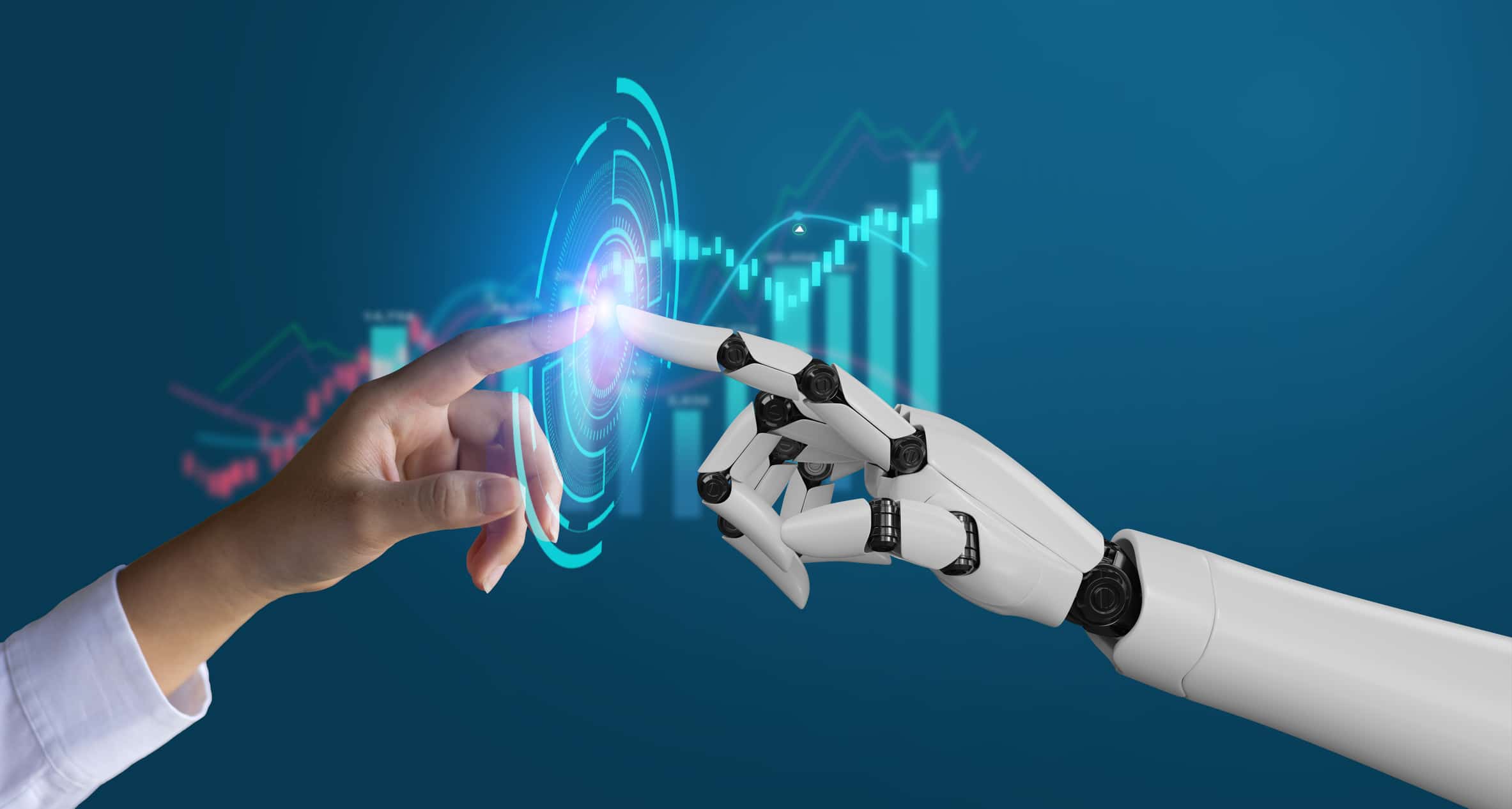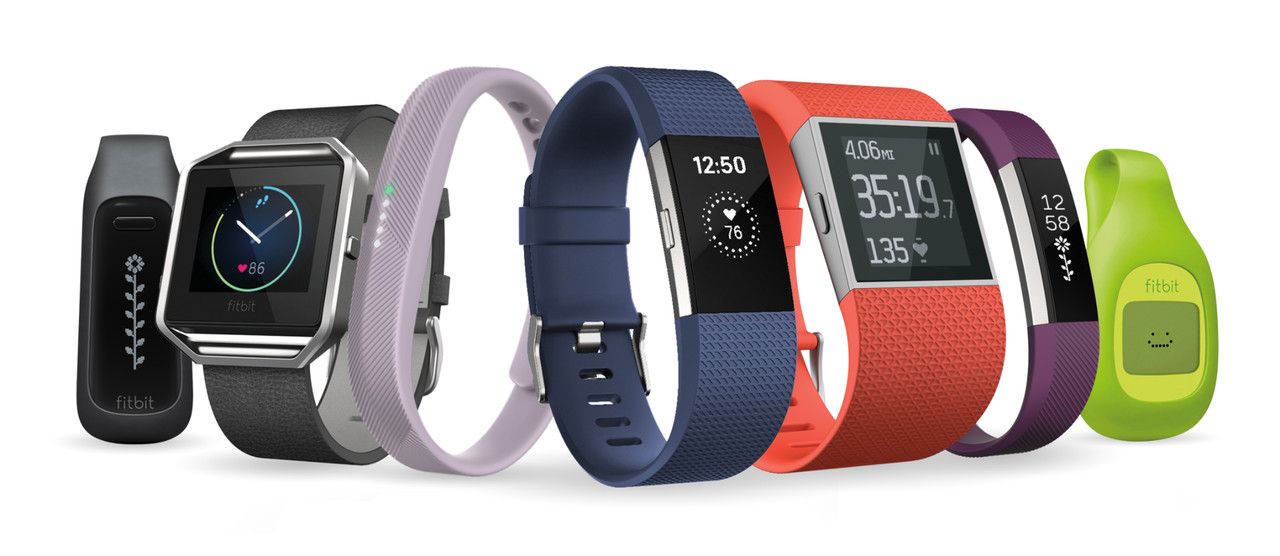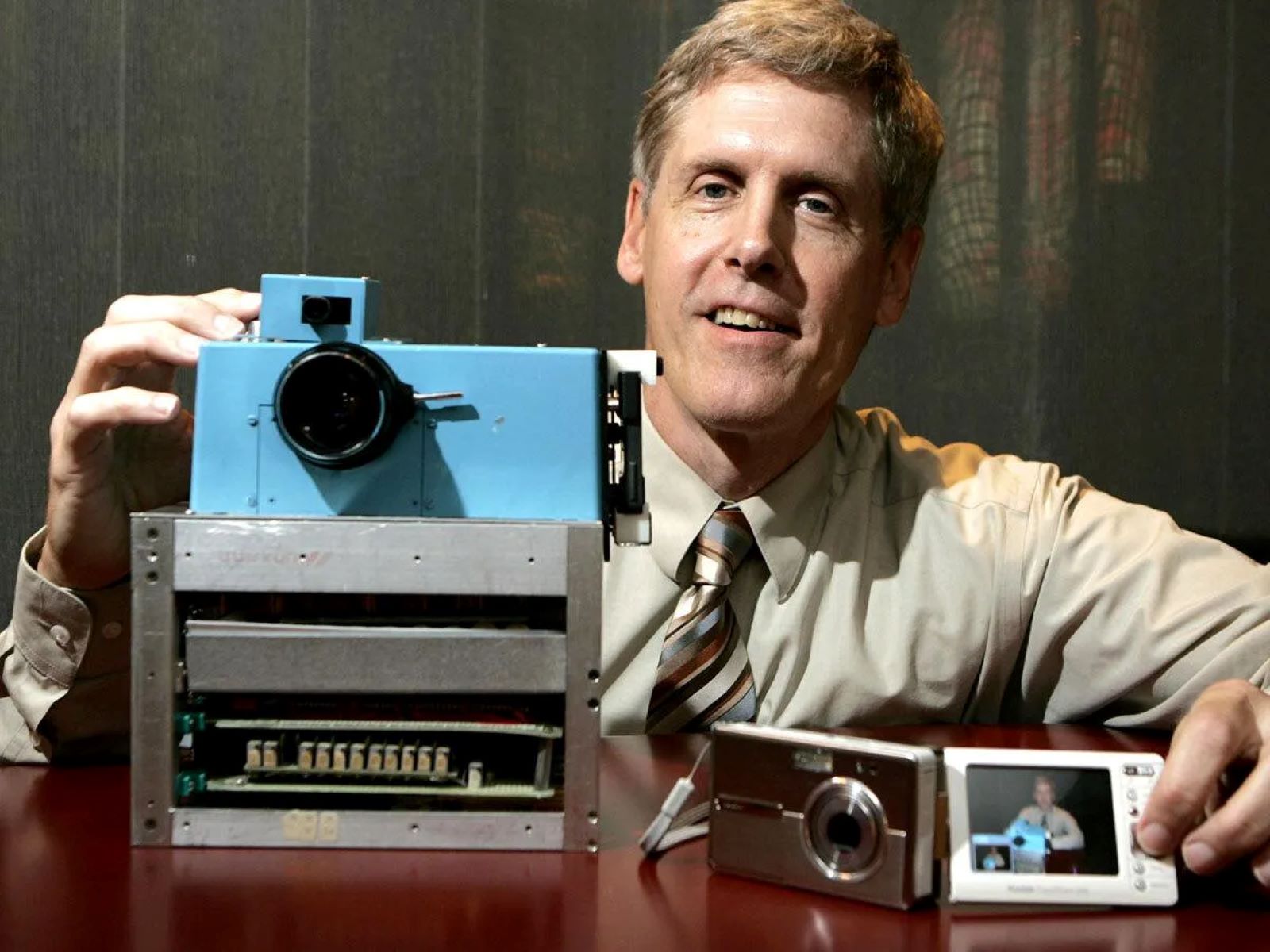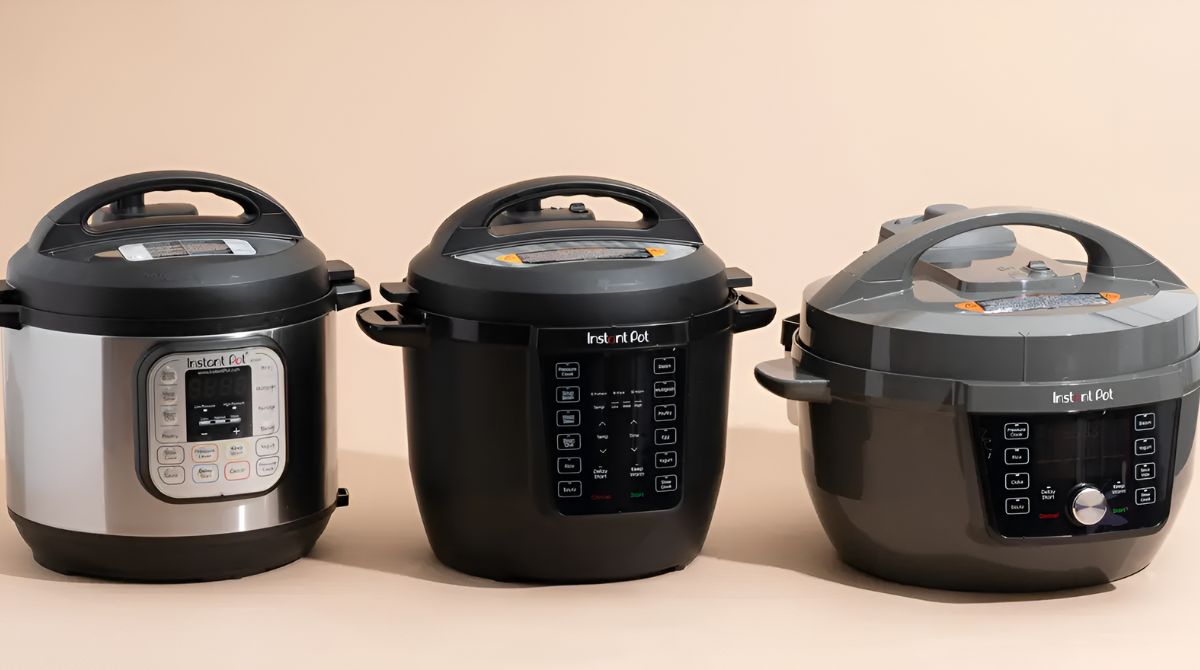Introduction
The invention of drones has revolutionized various industries and opened up endless possibilities for both commercial and recreational use. Also known as unmanned aerial vehicles (UAVs), drones have become an indispensable tool for a wide range of applications, from advanced military operations to capturing breathtaking aerial footage. These small, remotely controlled aircraft have taken the world by storm, transforming the way we perceive the skies and interact with our surroundings.
With their origins dating back to as early as the mid-19th century, drones have come a long way in terms of design, functionality, and capabilities. Initially, drones were primarily used for military purposes, providing reconnaissance and surveillance capabilities without risking human lives. However, the advancements in technology and the increasing demand for more affordable and accessible drones have led to their widespread use in a variety of fields.
Today, drones are not just limited to military and surveillance applications. They have become popular in industries such as filmmaking, photography, agriculture, construction, and even delivery services. Moreover, recreational enthusiasts have embraced drones as a means of capturing stunning aerial shots and exploring the world from a unique perspective.
The rapid development of drones is the result of advancements in electronics, miniaturization, and navigation systems. With the integration of high-resolution cameras, sensors, and GPS technology, drones are now capable of capturing incredible imagery and performing complex tasks autonomously.
However, as the popularity of drones continues to grow, so do concerns about privacy, safety, and the potential misuse of this technology. Establishing regulations and guidelines for drone usage has become necessary to ensure the responsible and ethical use of these devices.
In this article, we will explore the evolution of drones, from their early concepts and designs to their current applications and future possibilities. We will delve into the technological advancements that have shaped the drone industry, the regulations that govern their use, and the potential impact they may have on various sectors. So, let’s embark on this exciting journey to understand the remarkable world of drones!
Early Concepts and Designs
Although drones have gained significant popularity in recent years, the concept of unmanned flight has been around for much longer. The earliest ideas of aerial vehicles without human pilots can be traced back to the mid-19th century.
One of the first recorded attempts at building an unmanned aerial vehicle was by Austrian engineer and inventor, Anton Flettner, in 1898. Flettner developed a remote-controlled boat that could take to the skies using four rotor blades. While his device didn’t meet the criteria of a modern-day drone, it laid the foundation for future advancements in unmanned flight.
Fast-forward to the 20th century, and we see significant contributions to the development of early drone technology. During World War I, various countries began experimenting with remote-controlled aircraft, primarily for military purposes. Both the United States and Britain explored the potential of radio-controlled aerial torpedoes and reconnaissance aircraft.
In the 1930s, the British Royal Navy developed the “Queen Bee,” a radio-controlled target aircraft that could mimic the flight patterns of enemy aircraft for anti-aircraft training. This invention marked an important milestone in the evolution of drones as it demonstrated the feasibility and practicality of unmanned aerial vehicles.
The concept of drones continued to evolve during World War II, with both the Axis and Allied powers utilizing various unmanned aircraft for different purposes. The German military employed the ‘V-1’ flying bomb, a primitive cruise missile, while the British developed the ‘de Havilland DH.82B Queen Bee,’ a target drone based on the Tiger Moth aircraft.
However, it wasn’t until the 1950s that significant progress was made in drone technology. The Cold War between the United States and the Soviet Union led to intense competition in military aviation, resulting in the development of more sophisticated unmanned aircraft. The United States Air Force began the development of the ‘Q-Series’ drones, which played a pivotal role in gathering intelligence during the Korean and Vietnam Wars.
The Q-Series drones, alongside other advancements in technology, paved the way for modern drone design. These early models were often referred to as “pilotless aircraft” and were controlled remotely by operators on the ground. They served primarily as surveillance and reconnaissance tools, reducing the risks to human pilots in dangerous or covert missions.
As we moved into the late 20th century, technology continued to evolve at an unprecedented rate, leading to advancements in miniaturization, wireless communications, and advanced control systems. These developments set the stage for the drones we know today, with the capability to carry out a wide range of tasks and the potential to revolutionize various industries.
The First Drones
The journey of drones as we know them today truly began in the 1980s when technological advancements made it possible to create more affordable and accessible unmanned aerial vehicles. During this time, the United States pioneered the development of the Predator drone, which marked a significant milestone in drone history.
The predecessor to the Predator, the GNAT-750, was developed by General Atomics Aeronautical Systems Inc. in the 1980s. It was a reconnaissance drone that played a crucial role in gathering intelligence during the Gulf War in 1991. Following the success of the GNAT-750, General Atomics developed the iconic Predator drone, which revolutionized the field of unmanned aerial vehicles.
The Predator drone, designated as the RQ-1, was primarily designed for surveillance and reconnaissance missions. Equipped with advanced sensors and cameras, the Predator was capable of conducting long-endurance flights and transmitting real-time imagery back to operators on the ground. This technology significantly improved the ability to monitor and collect information in various scenarios.
One of the defining features of the Predator drone was its ability to carry out targeted strikes. This marked a shift in the capabilities of unmanned aircraft, as they were no longer solely limited to reconnaissance missions. The integration of precision-guided munitions transformed the Predator into a formidable weapon system, capable of striking targets with unparalleled accuracy.
The success of the Predator drone led to the development of its successor, the MQ-9 Reaper. The Reaper further improved upon the capabilities of its predecessor, with enhanced flight endurance, increased payload capacity, and improved sensors. It became a vital asset in military operations, particularly in counterterrorism efforts.
While the Predator and Reaper drones were groundbreaking in military applications, the technology began to attract attention outside of the defense sector. In the early 2000s, small consumer drones started to emerge in the market, enabling hobbyists, photographers, and filmmakers to explore the world of aerial photography and videography.
Companies like DJI played a significant role in driving the consumer drone industry forward. DJI’s Phantom series, launched in 2013, introduced a range of affordable and user-friendly drones equipped with high-resolution cameras. This sparked a surge in recreational drone use, as enthusiasts could now capture stunning aerial footage without breaking the bank.
Furthermore, the integration of GPS technology into consumer drones allowed for advanced flight modes, such as waypoint navigation and follow-me features. This made it easier for users to achieve professional-grade shots and opened up a new realm of creative possibilities.
With the democratization of drone technology, we witnessed a surge in commercial applications across various industries. Today, drones are extensively used in agriculture, construction, surveying, search and rescue operations, and even delivery services. They have become an essential tool for professionals, offering cost-effective and efficient solutions to complex tasks.
The first drones, with their origins in military operations, opened the doors to a new era of possibilities. They proved that unmanned aerial vehicles had the potential to transform industries, provide valuable services, and offer recreational enjoyment. As drone technology continues to advance, we can only imagine the incredible opportunities that lie ahead.
Military and Surveillance Applications
The military has been at the forefront of drone development since the inception of unmanned aerial vehicles. Drones have revolutionized military operations by providing enhanced surveillance, reconnaissance capabilities, and the ability to carry out precision strikes without endangering human lives.
One of the primary advantages of military drones is their ability to perform continuous surveillance over a designated area. Drones equipped with high-resolution cameras and infrared sensors can gather real-time intelligence, monitor enemy movements, and identify potential threats. This information is invaluable for military strategists in planning missions and maintaining situational awareness.
In addition to surveillance, drones are also employed in reconnaissance missions to gather critical intelligence in hostile environments. These unmanned aircraft can stealthily observe enemy positions, monitor sensitive areas, and identify potential targets for further action. Drones can access areas that may otherwise be inaccessible or pose significant risks to human operatives.
The integration of advanced technologies, such as artificial intelligence and machine learning algorithms, has further enhanced the capabilities of military drones. These autonomous systems can process vast amounts of data in real-time, assisting operators in identifying and classifying objects of interest. This significantly reduces the burden on human operators and allows for more efficient decision-making.
Military drones have also been crucial in counterterrorism efforts. Armed drones, such as the Predator and Reaper, can carry out precision strikes on high-value targets with minimal collateral damage. These unmanned aircraft have the ability to loiter over a target for extended periods, providing real-time surveillance and waiting for the opportune moment to strike, minimizing the risk to ground forces.
The use of drones in military operations has not only provided a tactical advantage but has also contributed to a significant reduction in casualties. By replacing manned aircraft in dangerous missions, drones have saved countless lives of military personnel, eliminating the need to expose pilots to hostile environments or high-risk situations.
Furthermore, drones have proven to be effective in border control, maritime surveillance, and anti-piracy operations. Their ability to cover large areas, spot illegal activities, and gather evidence has made them an invaluable asset in securing borders, preventing smuggling, and maintaining maritime security. Drones can track vessels, detect illegal fishing activities, and provide early warning of potential threats.
While military and surveillance applications have paved the way for drone technology, concerns over privacy and ethical use remain. The widespread adoption of military drones has raised debates about the potential misuse of unmanned aerial vehicles and the need for regulations to ensure responsible and lawful drone use.
The military and surveillance applications of drones have demonstrated their immense potential in improving situational awareness, reducing human risk, and enhancing operational capabilities. As technology continues to advance, we can expect further innovations in this field, leading to even greater achievements in military and surveillance applications.
Commercial and Recreational Use
Beyond military and surveillance applications, drones have gained tremendous popularity in the commercial and recreational sectors. The advancements in drone technology have opened up new opportunities and transformed various industries.
In the commercial sector, drones have revolutionized fields such as agriculture, construction, surveying, and aerial inspections. With the ability to carry high-resolution cameras, sensors, and thermal imaging equipment, drones can provide valuable data and insights that were once time-consuming and costly to obtain.
In agriculture, drones are used for crop monitoring, precision spraying, and yield estimation. Equipped with multispectral cameras, they can analyze plant health, identify areas of stress or disease, and optimize fertilizer usage. This enables farmers to make data-driven decisions, improving productivity and reducing environmental impact.
In the construction industry, drones are utilized for site surveys, progress monitoring, and 3D mapping. They can capture accurate aerial imagery, generate topographic maps, and create digital terrain models. This information aids in project planning, site management, and improving overall construction efficiency.
Drone technology has also transformed the field of aerial inspections. Drones equipped with high-quality cameras and sensor payloads can inspect infrastructure such as bridges, power lines, and oil rigs. They can detect structural issues, monitor corrosion, and identify potential hazards, making inspections safer, more cost-effective, and efficient.
Aside from commercial applications, drones have become increasingly popular for recreational use. Hobbyists, photographers, and filmmakers have embraced drones as a means of capturing stunning aerial shots and exploring unique vantage points.
Consumer drones, such as those manufactured by DJI, have made aerial photography and videography accessible to a wider audience. These drones are equipped with high-resolution cameras, stabilization systems, and intelligent flight modes, allowing users to capture professional-quality aerial footage with ease.
Recreational enthusiasts can now capture breathtaking landscapes, document their outdoor adventures, and explore their creativity from a whole new perspective. Drones have opened up a world of possibilities, enabling individuals to see the world from different angles and share their experiences in captivating ways.
Drone racing has also gained significant popularity as a recreational activity. Enthusiasts don FPV (First-Person View) goggles to experience the thrill of piloting drones through challenging race courses at high speeds. This emerging sport combines the excitement of racing with the adrenaline rush of flying, attracting participants and spectators alike.
As the commercial and recreational use of drones continues to grow, concerns related to safety, privacy, and proper regulation also arise. Governments and regulatory bodies are working to establish guidelines for drone operations, ensuring the responsible use of this technology.
Overall, drones have transformed the way various industries operate and have become a source of entertainment and creativity for individuals worldwide. With ongoing technological advancements and the development of new applications, the potential for commercial and recreational drone use is limitless.
Technological Advancements and Innovations
Technological advancements have played a pivotal role in shaping the drone industry, driving innovation and pushing the boundaries of what unmanned aerial vehicles can achieve. Over the years, significant progress has been made in areas such as flight capabilities, camera technology, autonomy, and user experience.
One of the most significant advancements in drone technology is the improvement in flight capabilities. Drones are now capable of longer flight durations, thanks to advancements in battery technology and efficient power management systems. This enables drones to cover greater distances and carry out more complex missions without the need for frequent recharging.
Another critical area of advancement is in the development of high-resolution cameras and imaging systems. Drones are equipped with advanced sensors and camera technologies, allowing for crystal-clear imagery and video capture. These cameras are capable of capturing stunning aerial footage in 4K resolution, providing users with incredible visual experiences.
The integration of advanced stabilization systems, such as gimbals and electronic image stabilization, has also greatly improved the quality of aerial footage. These systems minimize camera shake and vibrations, resulting in smoother, more professional-looking videos and images.
Autonomous capabilities have also seen significant progress in drone technology. Drones now feature intelligent flight modes that allow for automated flight paths, waypoint navigation, and follow-me functionalities. These features simplify the flying experience and enable users to focus more on capturing the desired shots or completing specific tasks.
Furthermore, the integration of obstacle detection and collision avoidance systems has made drones safer and more reliable. These sensors utilize technologies such as infrared, sonar, or computer vision to detect and avoid obstacles in real-time, reducing the risk of accidents and collisions.
Advancements in wireless communication protocols, such as Wi-Fi and Bluetooth, have improved connectivity between drones and ground control systems. Users can now enjoy real-time video streaming, instant data transfer, and seamless communication with their drones, enhancing the overall user experience.
Technological innovations have also led to the development of specialized drones for specific industries. For example, agriculture drones are equipped with multispectral cameras for crop analysis, while delivery drones are designed to carry packages safely and efficiently. These tailored solutions have unlocked new possibilities and applications across various sectors.
Emerging technologies, such as artificial intelligence and machine learning, are being integrated into drones to enhance their capabilities even further. These intelligent algorithms enable drones to perform more complex tasks, such as object tracking, autonomous mapping, and even autonomous decision-making in certain scenarios.
Moreover, ongoing research and development are focused on enhancing drone flight efficiency and safety. Researchers are exploring advanced propulsion systems, alternative energy sources, and innovative designs to improve flight duration, reduce noise levels, and increase sustainability.
The drone industry is continuously evolving, with new technologies and innovations being introduced regularly. As technology continues to advance, we can expect to see even more exciting developments in drone capabilities, making them even more powerful tools for a variety of industries.
Regulations and Safety Concerns
As drones become increasingly prevalent, concerns regarding safety, privacy, and responsible use have prompted the development of regulations and guidelines. Governments and aviation authorities worldwide have recognized the need to establish rules to ensure the safe and lawful operation of drones.
Regulations aim to address several safety concerns associated with drone use. One of the primary concerns is the risk of collisions with other aircraft. To mitigate this risk, drone operators are required to adhere to altitude restrictions and maintain a safe distance from airports and manned aircraft. Additionally, drones are required to be equipped with lights and identification markings to increase visibility.
Another safety concern is the potential for accidents or crashes, especially in densely populated areas. Regulations often specify where drones can be flown and include restrictions on flying near crowds, buildings, or sensitive infrastructure. These restrictions help minimize the risk of injury or damage to property.
Furthermore, operators are often required to undergo training and obtain certifications or licenses to ensure they possess the necessary knowledge and skills to operate drones safely. This helps promote responsible usage by ensuring that operators understand the capabilities and limitations of their drones and are aware of the rules and best practices to follow.
Privacy is a significant concern associated with drone usage. The ability of drones to capture high-definition imagery and video from above raises concerns about the unauthorized collection of personal or sensitive information. To address this, regulations may restrict the use of drones in certain areas or require operators to obtain consent when capturing footage in private or restricted areas.
Many countries have also established “no-fly zones” or restricted areas where drones are prohibited from flying. These zones typically include sensitive areas or locations with a high concentration of people, such as government buildings, airports, and stadiums. By designating these areas as off-limits, authorities aim to protect public safety and security.
The enforcement of regulations is another critical aspect of ensuring safe and responsible drone use. Authorities often monitor drone activity and may impose penalties for violations, such as unauthorized flights or flying outside of approved hours. This enforcement serves as a deterrent and encourages compliance with the established rules.
Regulations are constantly evolving alongside technological advancements. Authorities regularly reassess and update regulations to address new challenges and accommodate emerging drone technologies. The goal is to strike a balance between enabling the beneficial use of drones while ensuring public safety and safeguarding privacy rights.
As the drone industry continues to grow, collaboration between authorities, industry stakeholders, and drone users is key. Open communication and education campaigns can help raise awareness about regulations, safety practices, and responsible drone use. Ultimately, a shared commitment to safety and adherence to regulations will help ensure a harmonious integration of drones into our increasingly interconnected world.
Future of Drones
The future of drones holds immense promise, with advancements in technology and ongoing research paving the way for exciting and innovative possibilities. As the industry continues to evolve, we can anticipate several key developments that will shape the future of drones.
One area of growth is in autonomous drone systems. With advancements in artificial intelligence, machine learning, and computer vision, drones will become increasingly capable of operating with minimal human intervention. Autonomous drones will be able to perform complex tasks, such as automated inspections, precision delivery, and even collaborative missions. This level of autonomy will improve efficiency and enable drones to work seamlessly within various industries.
While consumer drones have mainly focused on aerial photography and videography, we can expect to see further advancements in this field. Drones will offer more advanced camera capabilities, such as improved image stabilization, higher resolution sensors, and enhanced zoom capabilities. These developments will enable users to capture even more detailed and professional-grade imagery.
New form factors and designs are also on the horizon. Companies are exploring innovative designs, such as foldable drones, hybrid VTOL (Vertical Take-Off and Landing) systems, and drones that can operate in various environments, including underwater and in extreme weather conditions. These designs will improve convenience, portability, and the versatility of drones for different applications.
The use of drones in delivery services is also set to expand in the future. Companies are already piloting drone delivery programs, and as regulations become more favorable and technology continues to improve, we can expect to see drones playing a significant role in last-mile deliveries. This can revolutionize logistics and e-commerce, offering fast and efficient delivery options for various goods.
Beyond traditional applications, drones have the potential to address global challenges and societal needs. For example, in disaster response scenarios, drones can be deployed for search and rescue operations, assessing damage, and delivering critical supplies. They can reach inaccessible areas and provide valuable information during emergencies, aiding in faster response and recovery efforts.
As with any evolving technology, challenges remain. Solving issues related to flight regulations, airspace management, and privacy concerns will be crucial for the widespread adoption and acceptance of drone technology. Research and collaboration among industry stakeholders, governments, and communities will be essential to address these challenges and ensure safe and responsible drone integration into society.
The future of drones is undoubtedly exciting, offering endless possibilities for various industries and applications. With continued advancements in technology, increased accessibility, and a commitment to responsible use, drones will continue to reshape our world, providing efficiency, innovation, and positive societal impact.
Conclusion
The invention and evolution of drones have revolutionized various industries and transformed our perception of the skies. From their early concepts and designs to the first military applications, drones have come a long way in a relatively short span of time. Technological advancements have significantly improved their flight capabilities, camera systems, autonomy, and user experience.
Drones have found applications in military and surveillance operations, providing enhanced reconnaissance, surveillance, and even precision strike capabilities. The commercial and recreational sectors have also witnessed a surge in drone usage, with drones being utilized in agriculture, construction, aerial inspections, photography, and filmmaking. These versatile unmanned aerial vehicles have proven to be invaluable tools, improving efficiency, safety, and data collection across various industries.
However, as drones become more prevalent, concerns regarding safety, privacy, and ethical use have emerged. Governments and aviation authorities have responded by establishing regulations and guidelines to ensure responsible drone operation. These regulations address concerns related to airspace safety, collision risks, privacy infringement, and the impact on public security.
Looking to the future, drones hold immense promise. Advancements in autonomous systems, camera technology, and innovative designs will continue to push the boundaries of what drones can achieve. We can expect to see drones playing an even larger role in delivery services, monitoring and responding to emergencies, and addressing global challenges.
While the future of drones is bright, it is essential to navigate this technological advancement responsibly. Collaboration among governments, industry stakeholders, and drone users will be crucial in ensuring the safe and ethical use of drones. Advancements in regulations, increased public awareness, and ongoing education will contribute to fostering a harmonious integration of drones into our society.
As the drone industry continues to evolve, the possibilities are endless. With the right balance of innovation, responsible use, and regulatory measures, drones have the potential to revolutionize industries, improve lives, and provide us with a new perspective on the world around us.







